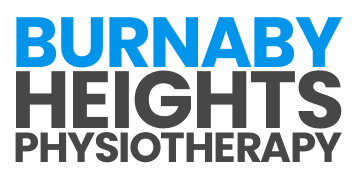
Targeted Care for Pain Relief: Discover When Physiotherapy Can Help
September 27, 2024
From Recovery to Prevention: The Benefits of Physiotherapy Exercises
October 31, 2024Vertigo can be a disorienting and uncomfortable condition that affects your balance and ability to navigate daily life. Whether it’s caused by issues within the inner ear or a disruption in the vestibular system, many forms of vertigo can be effectively managed with physiotherapy. Through specific exercises and therapeutic techniques, physiotherapy offers a path toward relief and a better quality of life. In this blog, we’ll explore how physiotherapy treats vertigo, the exercises commonly recommended, and lifestyle changes that can help manage your symptoms.
Understanding Vertigo
Vertigo is a sensation of spinning or dizziness, often described as feeling like the world is moving around you, even when you’re standing still. It can be triggered by head movements, changes in position, or even looking up or down. Unlike regular dizziness, vertigo gives the impression that you or your surroundings are in motion, leading to symptoms like nausea, loss of balance, and difficulty focusing.
Vertigo is not a condition itself but rather a symptom of various underlying issues, often related to problems in the inner ear or the vestibular system, which helps control balance and spatial orientation. The vestibular system sends signals to the brain about your body’s position in space, and when this system is disrupted, it can result in vertigo.
There are different causes of vertigo, including Benign Paroxysmal Positional Vertigo (BPPV), Vestibular Neuritis, and Meniere’s Disease, among others.
How Physiotherapy Helps Treat and Manage Vertigo
Physiotherapy plays a vital role in managing vertigo by addressing the underlying causes of imbalance and dizziness. A specific type of physiotherapy known as vestibular rehabilitation therapy (VRT) focuses on exercises that improve balance, reduce dizziness, and help the brain adapt to the disorienting signals caused by vertigo.
Here’s how physiotherapy can help treat vertigo:
- Targeted Exercises for Repositioning: For cases of BPPV, physiotherapists use specific repositioning maneuvers, such as the Epley maneuver, to move the dislodged crystals in the inner ear back to their proper position. This technique can provide immediate relief from vertigo symptoms in many individuals.
- Balance Retraining: People with vertigo often struggle with balance and coordination, making it difficult to perform daily activities. Physiotherapists guide clients through exercises that focus on improving balance and stability, helping them regain confidence in their movements.
- Gaze Stabilization Exercises: Vertigo can affect your ability to focus on objects, especially when moving your head. Gaze stabilization exercises train the eyes and brain to better control eye movements, helping to reduce dizziness and visual disorientation.
- Adaptation and Habituation Exercises: These exercises are designed to help the brain adapt to the abnormal signals caused by vertigo. Over time, the brain learns to ignore the faulty signals from the vestibular system, reducing symptoms of dizziness.
Physiotherapy for vertigo is highly personalized. Your physiotherapist will assess the severity of your vertigo and develop a tailored program that includes specific exercises designed to address your individual needs. By following the prescribed exercises consistently, many people experience significant improvements in balance and a reduction in vertigo symptoms.
What Types of Vertigo Can Be Treated with Physiotherapy?
Physiotherapy is effective for treating several types of vertigo, particularly those related to inner ear disorders and the vestibular system. Here are the main types of vertigo that can be managed through physiotherapy:
- Benign Paroxysmal Positional Vertigo (BPPV): BPPV is one of the most common and treatable forms of vertigo. It occurs when calcium crystals in the inner ear become dislodged, leading to dizziness with specific head movements. Physiotherapy, specifically the Epley maneuver or similar repositioning techniques, can effectively move these crystals back to their proper position, relieving symptoms.
- Vestibular Neuritis and Labyrinthitis: These conditions involve inflammation of the inner ear or the vestibular nerve, often caused by infections. While the initial infection may resolve on its own, the resulting balance problems and dizziness can linger. Vestibular rehabilitation exercises, including gaze stabilization and balance retraining, are used to help the brain adapt and compensate for the damage to the vestibular system.
- Chronic Subjective Dizziness: Some individuals experience a persistent sensation of dizziness or imbalance without a clear cause. Physiotherapy can help by focusing on balance exercises and desensitization techniques to reduce symptoms over time.
- Meniere’s Disease: While Meniere’s disease is more complex and often includes symptoms like hearing loss and tinnitus, physiotherapy can still play a role in managing vertigo associated with this condition. Vestibular rehabilitation can help improve balance and reduce dizziness during Meniere’s flare-ups.
Physiotherapy is most effective when it is tailored to the specific type of vertigo you’re experiencing. Your physiotherapist will conduct a thorough assessment to determine the cause of your vertigo and develop a treatment plan that includes the most appropriate exercises and techniques for your condition.
Physiotherapy for Vertigo: The Role of Exercise
Physiotherapists often recommend specific exercises depending on the type and severity of vertigo you’re experiencing. The goal of these exercises is to improve balance, retrain the brain to manage disorienting signals, and reduce dizziness. Here are some commonly prescribed exercises for vertigo:
- Epley Maneuver: The Epley maneuver is one of the most effective treatments for Benign Paroxysmal Positional Vertigo (BPPV). This exercise involves a series of head movements designed to reposition the dislodged calcium crystals in the inner ear, which cause dizziness. It typically provides fast relief, and many people experience significant improvement after just a few sessions.
- Brandt-Daroff Exercises: These exercises are recommended for people with BPPV to improve their tolerance to vertigo-inducing positions. You perform a sequence of rapid sitting and lying down movements to help the brain adjust to changes in head position and reduce dizziness over time.
- Gaze Stabilization Exercises: For individuals whose vertigo affects their ability to focus on objects, gaze stabilization exercises are key. These exercises involve moving your head from side to side while keeping your eyes fixed on a stationary object, which trains your brain to maintain focus despite head movement.
- Balance Training: For those who experience balance issues due to vertigo, exercises like standing on one leg or walking in a straight line can help improve stability. These exercises strengthen the muscles that control balance and help your body become more stable in various positions.
- Habituation Exercises: These exercises are designed to reduce the brain’s sensitivity to movements that trigger vertigo symptoms. They involve repeated exposure to movements that cause mild dizziness, which helps the brain adjust and reduce the disorienting effects over time.
Each of these exercises is tailored to the individual’s condition, and your physiotherapist will guide you through the correct techniques to ensure they are performed safely and effectively.
Physiotherapy for Vertigo: Healing Timelines Explained
The time it takes for physiotherapy to relieve vertigo symptoms varies depending on the underlying cause of the vertigo and the individual’s response to treatment. Some people, particularly those with BPPV, experience significant relief after just a few sessions, especially if repositioning maneuvers like the Epley maneuver are used.
For other types of vertigo, such as vestibular neuritis or chronic dizziness, the recovery process may take longer. It can take several weeks or months of consistent physiotherapy exercises to see a noticeable reduction in symptoms. For example, vestibular rehabilitation therapy (VRT) often requires regular practice of exercises over several weeks to help the brain adapt to changes in balance and reduce dizziness.
The key to success in treating vertigo through physiotherapy is consistency. People who diligently follow their physiotherapist’s prescribed exercise routine are more likely to see faster improvements. It’s important to remember that while physiotherapy is highly effective for many forms of vertigo, progress can be gradual, and patience is essential.
Managing Vertigo: The Role of Lifestyle Changes
In addition to physiotherapy exercises, certain lifestyle changes can make a significant difference in managing vertigo and reducing its impact on daily life. Here are some tips that can help:
- Stay Hydrated: Dehydration can worsen dizziness and vertigo symptoms, so it’s important to stay well-hydrated throughout the day. Drinking enough water can help regulate your body’s functions and reduce lightheadedness.
- Avoid Sudden Movements: Sudden head movements or quick changes in position can trigger vertigo episodes. Try to move slowly when getting out of bed, bending over, or turning your head to minimize dizziness.
- Limit Caffeine and Alcohol: Both caffeine and alcohol can affect the inner ear and exacerbate vertigo symptoms. Reducing your intake of these substances may help prevent dizziness.
- Manage Stress: High levels of stress and anxiety can make vertigo symptoms worse. Practicing relaxation techniques such as deep breathing, meditation, or yoga can help reduce stress and improve your overall well-being.
- Sleep Well: Fatigue can heighten vertigo symptoms, so getting enough rest is essential. Aim for a regular sleep schedule and make sure you’re getting sufficient, quality sleep each night.
- Exercise Regularly: Maintaining a regular exercise routine can help improve overall balance and coordination, reducing the frequency and severity of vertigo episodes. However, make sure to consult with your physiotherapist about the types of exercises that are safe and beneficial for you.
- Keep Your Home Safe: If you experience frequent dizziness, it’s important to take precautions at home to prevent falls. Make sure your living space is well-lit, and remove tripping hazards like loose rugs or clutter from walkways.
By incorporating these lifestyle adjustments alongside physiotherapy, you can manage vertigo more effectively and reduce the risk of symptoms disrupting your daily life.
Find Stability and Move With Confidence
If you’re struggling with vertigo and looking for a proven treatment that addresses the root cause of your dizziness, physiotherapy may be the answer. At Burnaby Heights Physiotherapy, our experienced team offers vestibular rehabilitation, with tailored exercise programs to help you regain your balance and reduce vertigo symptoms. Don’t let vertigo disrupt your life—contact us today to schedule your personalized session and take the first step toward feeling steady and confident again!






